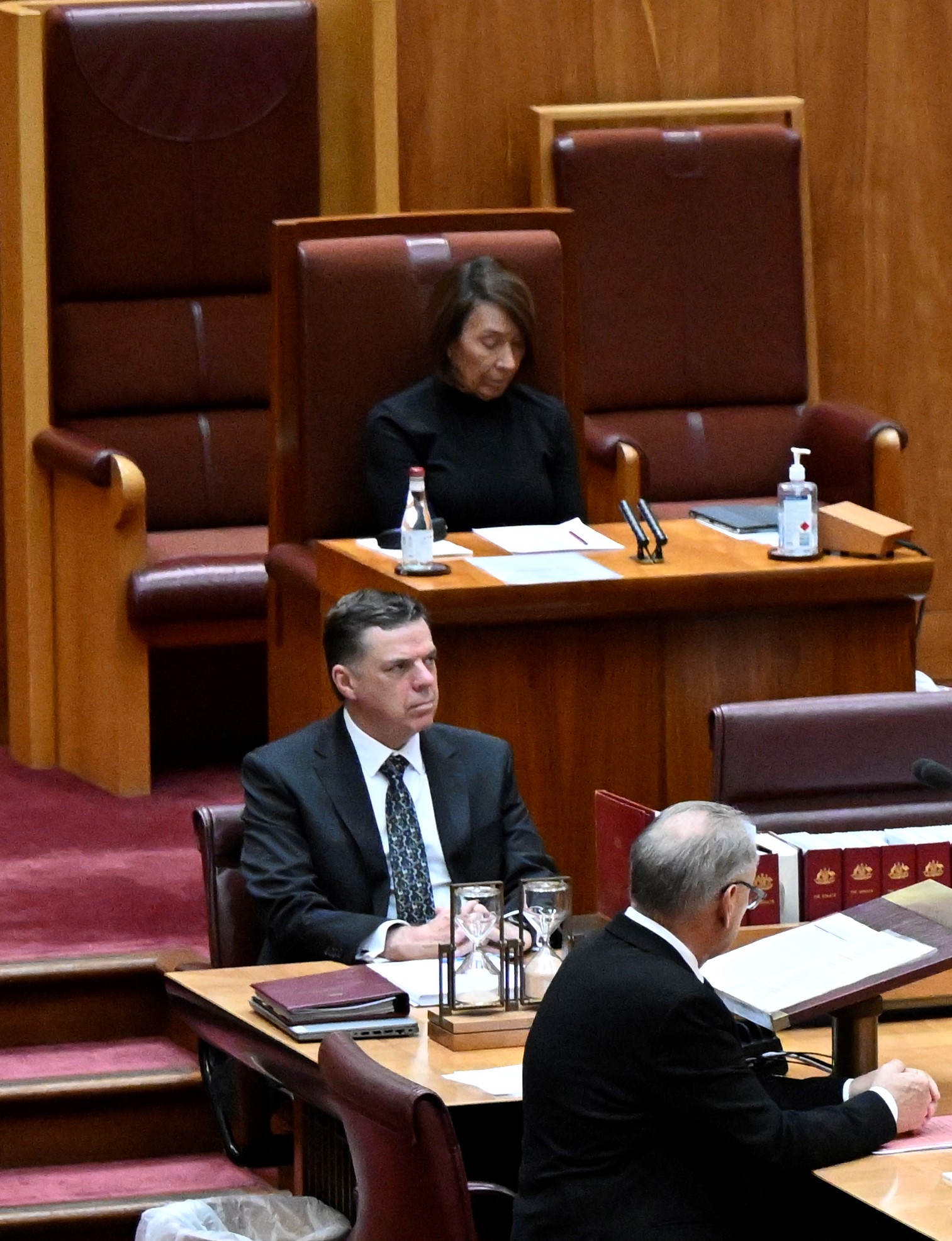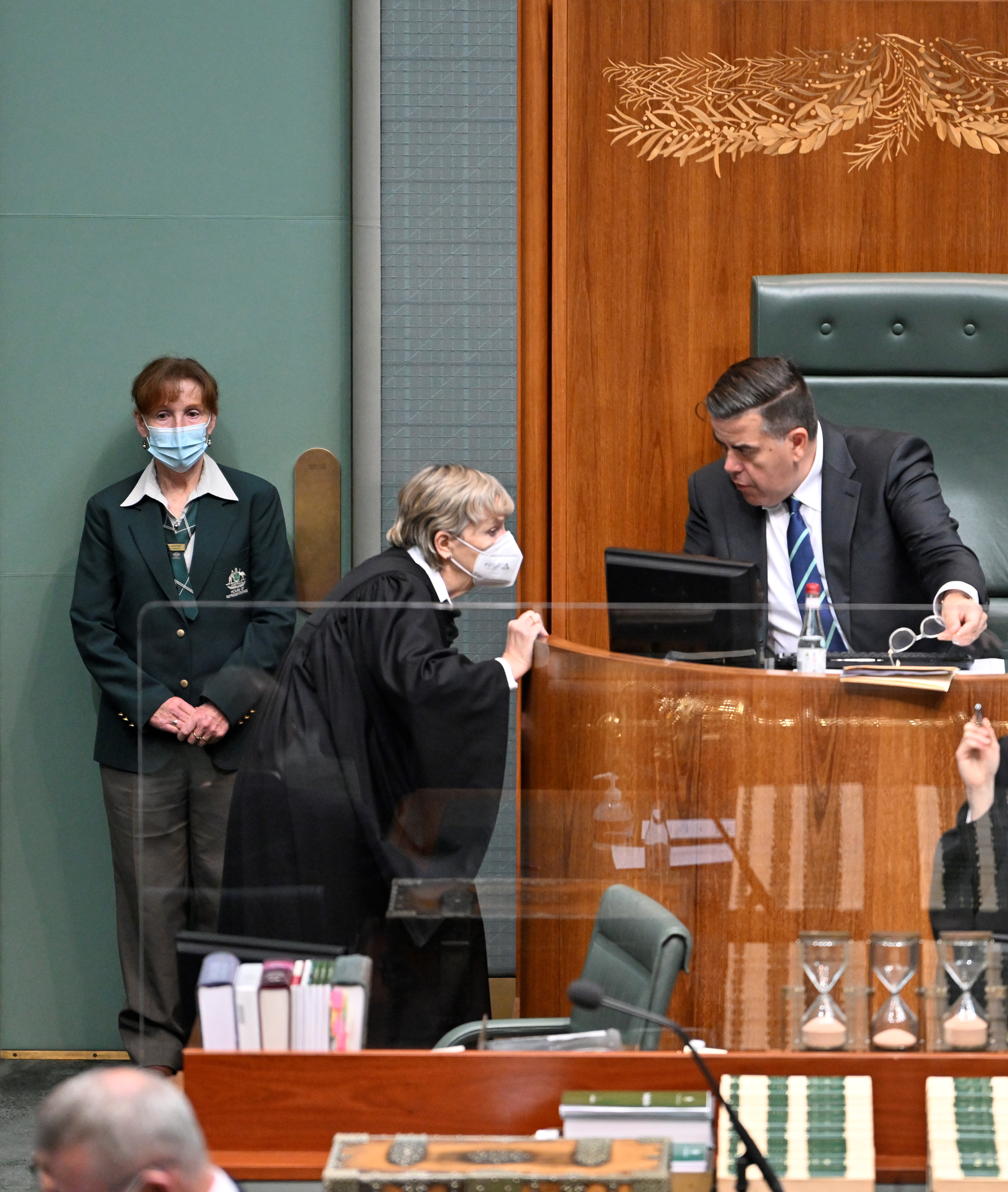Clerks
Understand the role of the Clerks in the Senate and House of Representatives with this fact sheet. Learn about their work and the history of their positions.
What will I learn?
- Clerks are the top-level parliamentary officer.
- Clerks assist to run meetings in the Senate and the House of Representatives.
- The Clerks are the only non-elected people who regularly speak in the Senate or the House.
The Clerk of the Senate.

Paul Furness/DPS Auspic
Description
A man in a suit is sitting at a table listening. There are books and 2 hourglasses in front of him. Behind him the President of the Senate sits in her elevated chair.
Copyright information
Permission should be sought from DPS AUSPIC for third-party or commercial uses of this image. To contact DPS AUSPIC email: auspic@aph.gov.au or phone: 02 6277 3342.
The Clerk of the House of Representatives.

DPS Auspic
Description
The Clerk, wearing a black gown leans in to speak to the Speaker of the House of Representatives in his chair. In front is her desk, with books and sand timers.
Copyright information
Permission should be sought from DPS AUSPIC for third-party or commercial uses of this image. To contact DPS AUSPIC email: auspic@aph.gov.au or phone: 02 6277 3342.
Who are the Clerks?
The Senate and the House of Representatives each have a Clerk, who is the top-level parliamentary officer. The Clerks are the main advisers on matters relating to the business and procedures of the Parliament. They are the only non-elected people who regularly speak in the Senate or House.
Role
The Clerks have several responsibilities in the Senate or House. They:
- help to organise the program for each sitting day
- provide advice on procedure and standing orders – the rules of the meeting
- assist the President of the Senate or the Speaker of the House of Representatives to run meetings
- announce each item of business, table documents and certify the passage of bills through the Parliament by signing them
- record the actions and decisions of Parliament in a daily publication — Journals of the Senate (Senate), and Votes and Proceedings (House)
- ring the bells at the request of the Presiding Officer
- assist with ceremonial occasions, such as the opening of Parliament and the swearing-in of new members of parliament.
The Senate and House also have a Deputy Clerk and several Clerk Assistants who support the Clerks in their duties.
Department role
The Clerks also have an administrative role as the heads of the Department of the Senate and Department of the House of Representatives. Clerks:
- manage the staff and departments which provide services to members of parliament
- organise the daily operations of Parliament
- advise members of parliament on parliamentary rules, practice and procedure, the requirements of the Australian Constitution and laws that affect Parliament.
History
The role of the Clerk dates back to English parliament in the 1300’s. Clerks could both read and write at a time when most people could not. The Clerk read out the complete text of proposed laws to inform members of its contents and kept a record of decisions. In Australian Parliament, in keeping with tradition the Clerk reads out the title of each bill 3 times before it is passed. This indicates agreement to the bill at different stages.
In the past, Clerks in the Australian Parliament wore a wig and gown. In the mid-1990’s Clerks stopped wearing the wig, although the Clerk in the House still wears a traditional gown.